Comarum L.
marsh cinquefoil, swamp cinquefoil, purple cinquefoil, purple marshlocks
Rosaceae
Eurasia, North America
Comarum palustre L. [offered under the synonym Potentilla palustris (L.) Scop.]
none
not weedy
amphibiousamphibious:
(adj) of a plant able to live on land or in water
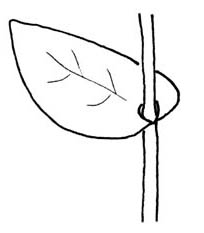 or emergentemergent:
or emergentemergent:
(adj) (syn. emersed) with parts raised out of the water; extending up out of the water
 , stoloniferious and rhizomatousrhizomatous:
, stoloniferious and rhizomatousrhizomatous:
(adj) possessing rhizomes
 herb
herb
Stem ascending to erect, sometimes floating, often rooting at nodes, glabrousglabrous:
(adj) without hairs or scales
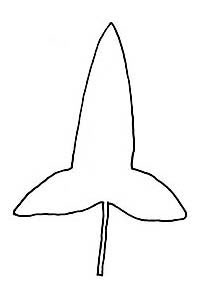 in lower part, hairy above, reddish. Leaves al ternateternate:
in lower part, hairy above, reddish. Leaves al ternateternate:
(adj) in threes
 ; petiolatepetiolate:
; petiolatepetiolate:
(adj) relating to or in the form of a petiole; bearing petioles
 , becoming sessilesessile:
, becoming sessilesessile:
(adj) attached directly, without a stalk
 along stem; stipules mostly adnate to petiolepetiole:
along stem; stipules mostly adnate to petiolepetiole:
(n) the stalk of a leaf
 ; leaf bladeblade:
; leaf bladeblade:
(n) (syn. lamina) the flat, expanded part of a leaf, frond, or petal (excluding, e.g., the petiole)
 compoundcompound:
compoundcompound:
(adj) with two or more like parts, as in a compound leaf; divided into two or more subsidiary parts or orders, as in a compound inflorescence
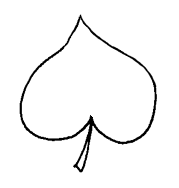 (imparipinnateimparipinnate:
(imparipinnateimparipinnate:
(n) a pinnate leaf in which all leaflets are paired and a terminal leaflet is present
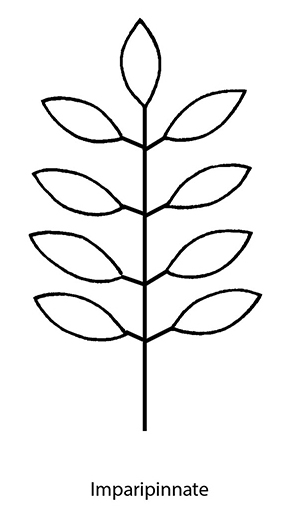 ), overall leaf orbicularorbicular:
), overall leaf orbicularorbicular:
(adj) circular in outline
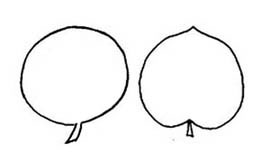 to oblongoblong:
to oblongoblong:
(adj) two to four times longer than wide, with +/- parallel sides
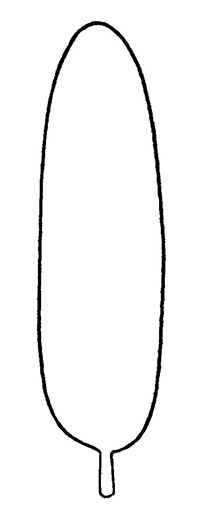 ; leaflets sessilesessile:
; leaflets sessilesessile:
(adj) attached directly, without a stalk
 or subsessile, lanceolatelanceolate:
or subsessile, lanceolatelanceolate:
(adj) lance-shaped; widest point below the middle, tapering to the apex
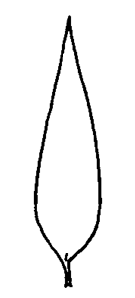 to ellipticelliptical:
to ellipticelliptical:
(adj) in the form of an ellipse (oval)
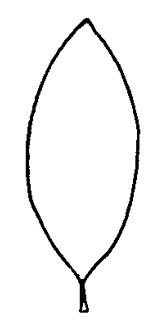 or obovateobovate:
or obovateobovate:
(adj) ovate, with the narrow end at the base
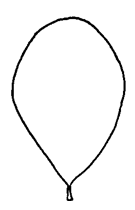 , glabrousglabrous:
, glabrousglabrous:
(adj) without hairs or scales
 to sparsely strigosestrigose:
to sparsely strigosestrigose:
(adj) with stiff, straight, sharp, appressed hairs
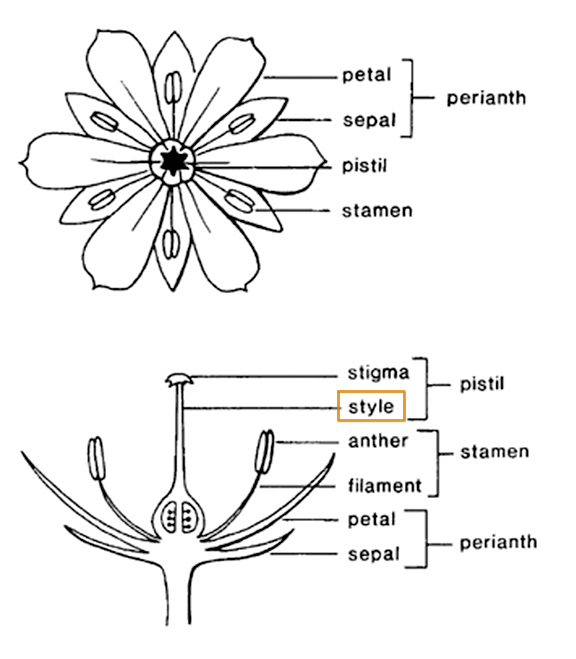 , apexapex:
, apexapex:
(n) the point farthest from the point of attachment; the tip (often pointed)
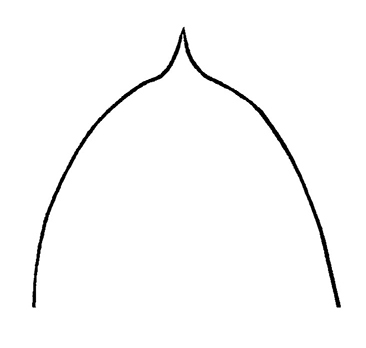 obtuseobtuse:
obtuseobtuse:
(adj) with a blunt or rounded apex and sides coming together at an angle of more than 90 degrees
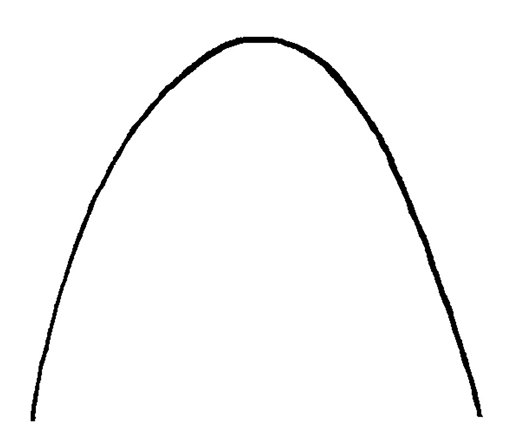 or acuteacute:
or acuteacute:
(adj) tapering to a sharp, pointed apex with more or less straight sides; broader than acuminate; forming an angle of less than 90 degrees
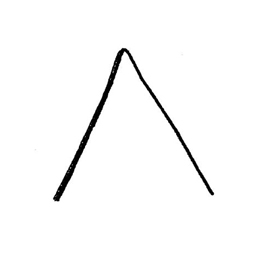 , base attenuateattenuate:
, base attenuateattenuate:
(adj) narrowing gradually to a point
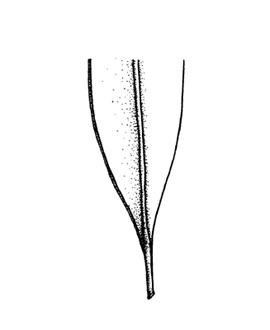 , marginmargin:
, marginmargin:
(n) edge; rim
 serrateserrate:
serrateserrate:
(adj) (of a leaf margin) bearing sharp teeth pointing forward or to the apex
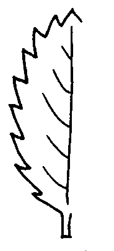 , venationvenation:
, venationvenation:
(n) the arrangement of veins in a leaf
 pinnate. Inflorescenceinflorescence:
pinnate. Inflorescenceinflorescence:
(n) the arrangement of flowers on the floral axis
 a terminalterminal:
a terminalterminal:
(adj) at the apex
 or axillaryaxillary:
or axillaryaxillary:
(adj) in, of, or produced from an axil
 cymecyme:
cymecyme:
(n) a determinate, usually flat-topped or convex inflorescence in which the terminal flower blooms earliest
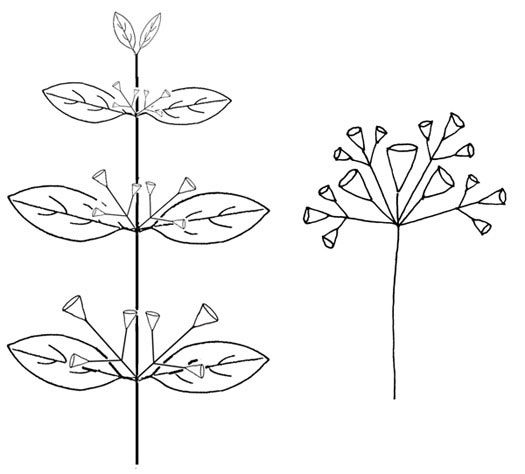 , 1-10-flowered; pedunclepeduncle:
, 1-10-flowered; pedunclepeduncle:
(n) the stalk of a flower cluster or inflorescence
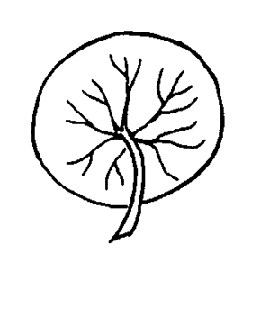 and pedicelspedicel:
and pedicelspedicel:
(n) the stalk of a single flower in an inflorescence, or of a grass spikelet
pilose and purplish-glandular; sepals typically 5, spreading, tri angularangular:
(adj) having projecting longitudinal angles; undulate, but sharply angled rather than gently rounded
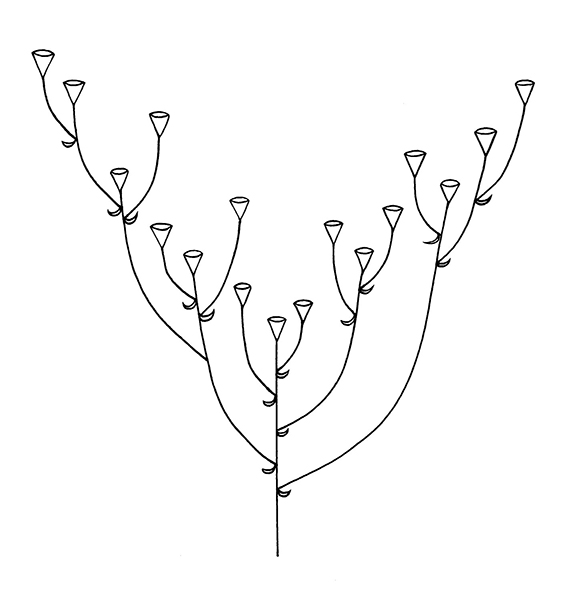 -ovate, much larger than petals; petals typically 5, small, ovateovate:
-ovate, much larger than petals; petals typically 5, small, ovateovate:
(adj) egg-shaped in outline; generally with the broad end at or near the base
 to ellipticelliptical:
to ellipticelliptical:
(adj) in the form of an ellipse (oval)
 , dark red; stamens 20-25, shorter than petals, dark red-purple.
, dark red; stamens 20-25, shorter than petals, dark red-purple.
often in sphagnum-dominated ponds, fens, bogs, marshes, swamps, wet meadows prone to flooding, creek, stream and lake margins; always associated with fresh, non-brackish water
A monotypicmonotypic:
(adj) represented by a single example (species)
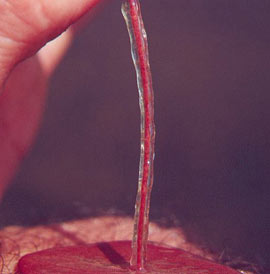 genus; Comarum palustre was previously included in Potentilla and is often offered under the synonym P. palustris (L.) Scop.
genus; Comarum palustre was previously included in Potentilla and is often offered under the synonym P. palustris (L.) Scop.
Linnaeus recognized five distinct genera whose phylogeny has since proven to be problematic (Potentilla, Comarum, Fragaria, Sibbaldia, and Tormentilla). Suggestions to group all these genera under Potentilla soon followed, leading to issues regarding monophyly. Early molecular phylogenetic analysis indicated that previously segregated genera (including Comarum) could only be included in Potentilla if an impractical taxonomic group were to be accepted (Eriksson et al, 1998). Further analysis placed Comarum in the Fragariinae clade, still within the Potentilleae but outside of Potentilla (Eriksson et al, 2003). Although the phylogeny is well-supported, Comarum palustre may still be referred to as the synonym Potentilla palustris.